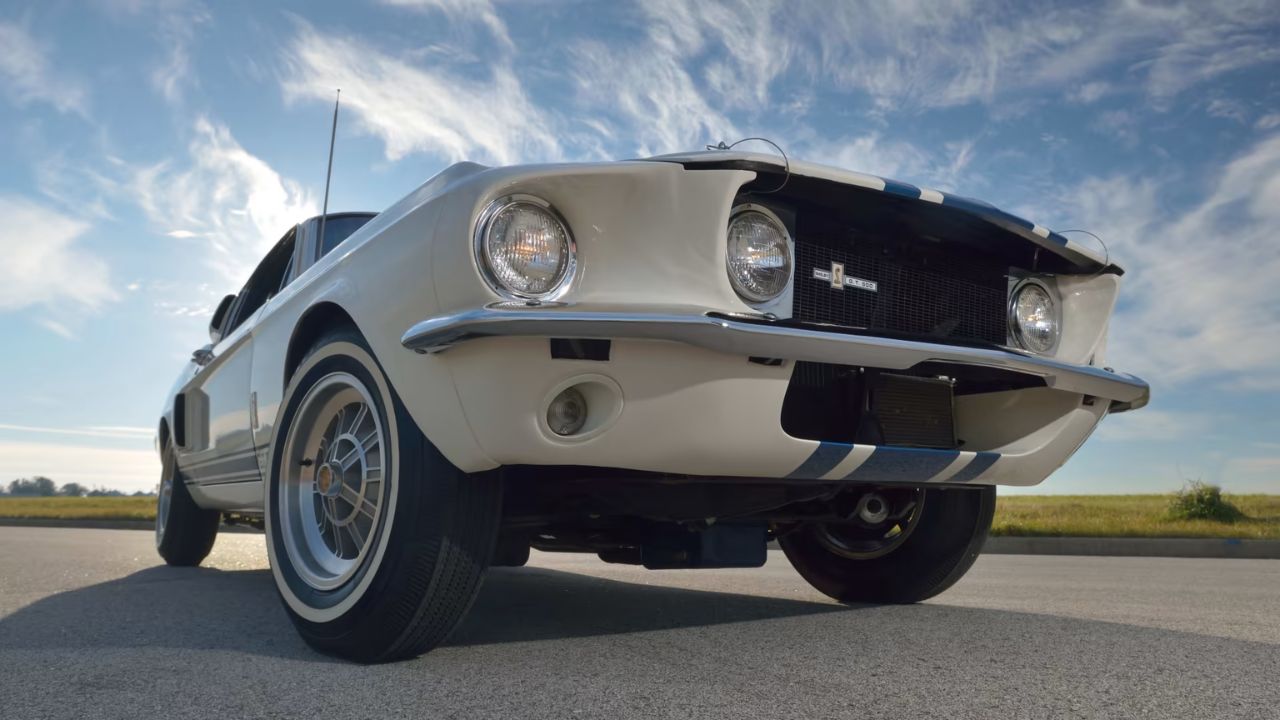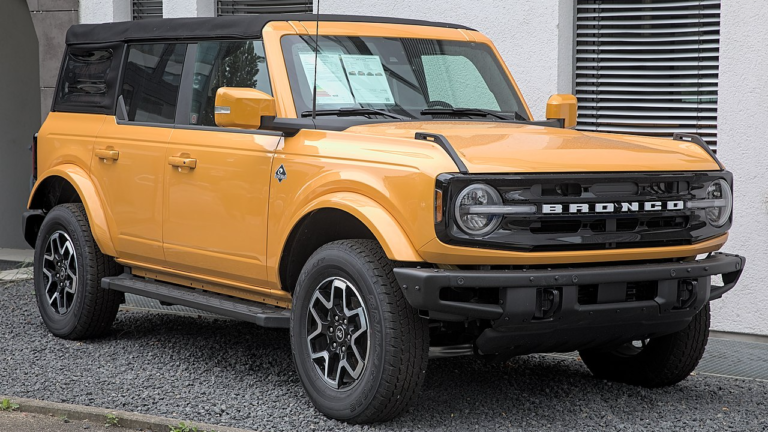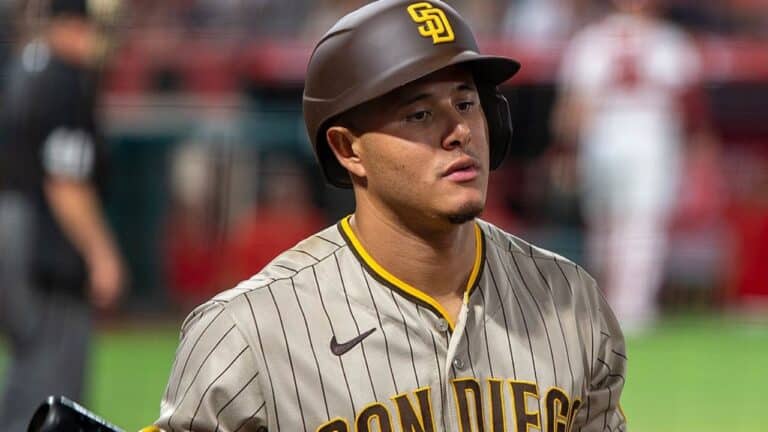24 Legendary Muscle Cars People Have Never Heard Of

Muscle cars had their golden era in the ‘60s and ‘70s, when seemingly every American carmaker churned out one iconic model after the other.
As mainstream as muscle cars were then, the manufacturers still built several highly exclusive models. Some saw only single-digit production numbers, and while others weren’t quite as rare, the odds of seeing one today are slim to none.
We’ve included pony cars on this list, but not American sports cars like the Chevrolet Corvette and Shelby Cobra.
1969 Chevrolet Camaro Baldwin Motion LS7 – 1 Car

Baldwin Motion built some of the fastest semi-production cars in the States in the 1960s and 1970s. The DOJ and EPA eventually shut down the company in 1974, but some of its cars are still in collections.
Only one 1969 Chevy Camaro was converted to 454 spec by Baldwin Motion, and earlier this year, someone bid $750,000 for it at Mecum’s Kissimmee auction. Its massive V8 engine packed a whopping 525 ponies, which were sent to the rear wheels via a manual transmission.
1967 Shelby Mustang GT500 Super Snake – 1 Car

Ford introduced the Mustang in 1964, and the following year, Shelby had turned the humble secretary’s car into a proper performance pony. By 1967, the Shelby GT350 and GT500 were well-known among American performance car enthusiasts, but Carroll Shelby was far from done.
He installed the massive 428 V8 from the Ford GT40 race car and an upgraded suspension in a 1967 Mustang to create the GT500 Super Snake. Built to promote a new line of Goodyear tires, Shelby drove it at 170 mph, hoping to convince 50 people to buy one. Unfortunately, it was too expensive, and only one car was ever made.
1968 Chevrolet Camaro Z/28 Convertible – 1 Car

Vince Piggins is widely recognized as the man behind the Camaro Z28, and in 1968, he built a custom, one-off convertible for Chevrolet general manager Pete Estes.
The one-off car wasn’t just a Z28 with the roof chopped off, either. It featured several special components, including the cross-ram intake manifold, cowl-induction hood, and disc brakes on all four wheels. The 1968 Camaro Z/28 was practically a race-ready package, so this unique soft-top Camaro was guaranteed to move.
1970 Plymouth Duster Rapid Transit – 1 Car

The Plymouth Duster is one of the more affordable classic Mopar muscle cars, but the Rapid Transit certainly isn’t included in that company. Plymouth built this unique model to promote the Rapid Transit System — its equivalent of the Dodge Scat Pack cars.
Plymouth built a 1970 Road Runner, a 1970 Barracuda, and a Duster to showcase the Rapid Transit cars at dealerships nationwide. The one-off Duster Rapid Transit had a 275-hp 340 V8 under the hood.
1967/1970 Dodge Coronet R/T 426 Hemi Convertible – 2 Cars Each Year

While the regular Coronet wasn’t exactly rare, Dodge did make some very special versions that stood out. The Coronet R/T (Road and Track) could be optioned with the legendary 426 Hemi engine, but not many buyers did.
In fact, only two people bought a 1967 Coronet convertible with the Hemi engine, and in 1970, Dodge gave it some minor updates, and two more cars were sold.
1970 Chevrolet Camaro Z/28 ‘Hurst Sunshine Special’ – 3 Cars

In 1970, Chevrolet introduced the second-gen Camaro, which looked nothing like its predecessor. This was also the year they built one of the rarest Camaros ever, the Z/28 Hurst Sunshine Special.
The Hurst Sunshine Special cars featured an experimental sunroof and a Hurst shifter, but at the last minute, Chevrolet decided it wouldn’t put it into production. Three cars were made, and only one is known to exist today.
1970 Ford Torino King Cobra – 3 Cars

Unlike today’s NASCAR racers, the cars were initially based on actual models customers could buy. For the 1969 and 1970 seasons, NASCAR allowed the so-called Aero Specials, which led to the Plymouth Superbird and Dodge Charger Daytona dominating the series.
Those weren’t the only homologation-special aero cars, as Ford built three prototypes of the 1970 Ford Torino King Cobra. The three cars were fitted with a Boss 429, a 429 Super Cobra Jet, and a 429 Cobra Jet engine. They had no problems smashing through the 200 mph barrier but were downright dangerous to drive. Ford eventually sold the three cars to private owners.
1993 Ford Mustang Saleen SC – 5 Cars

Saleen got its start by tuning Ford Mustangs, and while the company eventually built its own supercar, the S7, we’ll focus on the Saleen SC Mustang. Saleen only sold five of them, so it’s much rarer than the S7.
Clever readers have probably guessed that SC stands for supercharged. Saleen bolted a Vortech supercharger to the Mustang’s 5.0 engine and squeezed out an impressive 450hp.
1981 Chevrolet Yenko Turbo Z – 19 Cars

Don Yenko was a Chevy dealership owner and race car driver. He was also among the first people to recognize the Camaro’s true potential. Over the years, he created some very interesting versions, one of which was the 1981 Yenko Turbo Z.
Only 19 Yenko Camaro Turbo Zs were built — 16 were Stage 1 cars, and the remaining three were Stage 2. They had a functional hood scoop, 15-inch Rally wheels, and some aero parts, but the most significant improvement was under the hood. The malaise era was still in full effect, but Yenko teased out an estimated 300 ponies from the Camaro.
1997 Pontiac Firehawk LT4 Special Edition – 29 Cars

Ed Hamburger founded SLP Engineering in 1987, and the company can be considered a factory tuner, much like AMG. It introduced the Firehawk model in 1992, but the LT4 version from 1997 is one of the rarest, with only an estimated 29 cars made.
It had a 5.7-liter LT4 V8 from the outgoing C4 Corvette Grand Sport, and with 330hp sent to the rear wheels via a six-speed Borg Warner gearbox, it was a whole different beast than the “standard” LT1-powered Firehawk.
2009 Lee Iacocca 45th Anniversary Mustang – 45 Cars

Forty-five years after the Mustang made its first appearance, Ford decided to celebrate two legends at once — the Mustang and Lee Iacocca, one of the most famous American automotive executives.
The first of the 45 cars was gifted to Iacocca for his involvement in the Mustang’s development. All the coach-built 2009 Lee Iacocca 45th Anniversary Mustangs were painted silver, and since they were based on the GT model, they were powered by the 4.6-liter V8 engine.
1971 AMC Matador Machine – 50 Cars

Everyone knows about the legendary AMC Rebel Machine, but in 1971, AMC introduced the “Machine” package for the Matador. It was nowhere near as successful as the Rebel, as AMC only managed to sell 50 Matador Machines.
The Machine package included upgraded suspension, a new exhaust, and performance tires. For the engine, buyers could choose between the 360 or 401 V8, which meant a maximum of 330-hp.
1968 Chevrolet Nova SS COPO – 50 Cars

Vince Piggins, the Camaro Z28 guy, was also behind the 1968 Chevy Nova SS COPO. GM was still enforcing its engine size rules then, but he elegantly side-stepped that by using a loophole.
The COPO system was originally intended for fleet orders, such as police vehicles or company trucks, but Piggins used it to order high-performance Chevy cars. The 1968 Nova SS COPO was fitted with the L78 396 V8 engine, producing 375-hp. Chevrolet could only approve the COPO order if at least 50 cars were made, and out of those 50, only 12 are believed to still exist.
1968 Plymouth Barracuda B029 Super Stock – Between 50 And 70 Cars

Today, we have the Dodge Demon SRT 170, but in 1968, Plymouth released the Barracuda B029 Super Stock, which was essentially a road-legal, full-blown drag racer. Based on the second-gen Barracuda, it was built on Mopar’s A-Body platform.
Plymouth built the B023 Super Stock with help from Hurst Performance. It was given a redesigned chassis, a lighter body, heavy-duty rear suspension, fiberglass fenders, acid-etched steel doors, and some modifications to the Hemi V8 engine. With a 10-second quarter-mile time, it’s safe to say it was fast!
1967 Chevrolet Yenko Super Camaro – 54 Made

We’ve already covered the turbocharged Yenko Camaro from 1981, but Don Yenko was improving the Bow Tie Ponies long before that. Like Vince Piggins, Yenko circumvented GM’s engine size rules, but he did it differently.
In 1967, he ordered SS Camaros with the 396 engine, only to swap it for the Corvette’s 427 V8 and some other upgrades. By 1969, Yenko had Chevrolet install the engines on the factory assembly line via the COPO system. The Yenko Super Camaros are recognizable thanks to the visual package that included “Yenko 427” badges and stripes, and “sYc” on the headrests.
1967 Dodge Coronet WO23 / Plymouth Belvedere RO23 – 55 Cars

Mopar brands Dodge and Plymouth released a pair of road-legal drag racers in 1967. For all intents and purposes, the Dodge Coronet WO23 and the Plymouth Belvedere RO23 were practically identical but with different badges and other minor details.
Both manufacturers built 55 cars to meet the NHRA minimum requirement for drag racing homologation. The cars were fitted with upgraded 426 Hemi engines, the battery was moved to the trunk, and anything deemed unnecessary to go fast down the drag strip was removed — some were even delivered with a rear-seat delete from the factory.
1966 Ford Fairlane 500 R-Code – 57 Cars

Ford introduced the Fairlane as a full-size model in 1955, but in 1962 it became a midsize car. From there, it gradually became a muscle car and eventually the base for Ford’s Torino and Cobra models.
In 1966, Ford built 57 units of the Fairlane 500 R-Code; all were race-ready straight from the factory, thanks to the mighty 7.0-liter Cobra engine, dual Holley carburetors, front disc brakes, a lift-off hood, and a radio delete. With 425hp and 480 lb-ft of torque, the 500 R-Code was an absolute beast.
1963 Chevrolet Impala Z11 – 57 Cars

The Impala was in its third generation in 1963, and Chevrolet decided to introduce a high-performance version under what’s known as Regular Production Option (RPO). The Impala Z11 was based on the Sport Coupe version and only available as a two-door hardtop.
Under the hood, the Z11 had an upgraded 427 V8. It was based on the W-series 409 unit but had a longer stroke, a different compression ratio, a two-piece aluminum intake manifold, and dual Carter AFB carburetors. With 430hp and 575 lb-ft of torque, the Impala Z11 was a proper sleeper. Exterior-wise, it had aluminum body panels but not much else to hint that it was something special.
1968 Dodge Charger 500 Hemi – 67 Cars

Before the Charger Daytona with the massive wing and nose cone was a thing, Dodge built another NASCAR homologation model — the Charger 500. It also featured improved aerodynamics, such as an indented grille, recessed rear window, and chin spoiler.
Dodge built the Charger 500 to go head-to-head with the Ford Torino Talladega and Mercury Cyclone Spoiler II on the racetrack, but it never met the expectations. Dodge initially planned to build 500 cars, but only 392 were sold. Of those, 67 had the 426 Hemi engine, and only 27 were fitted with the four-speed manual transmission.
1969 Chevrolet Camaro ZL-1 – 69 Cars

As mentioned, Chevy circumvented GM’s engine size rules for midsize and smaller cars in the late 1960s by creating Central Office Production Orders, or COPO. In 1969, car enthusiasts could order the “regular” number 9561, a Camaro with the L72 427 engine, known as the COPO Camaro, or the much more special 9560.
The 9560 was the ZL-1 Camaro. It had a 427 V8 with an all-aluminum block made specifically for drag racing. Only 69 cars were delivered with this option, making it one of the rarest Camaros ever.
1968 Dodge Hemi Dart Super Stock – 80 Cars

Dodge built some fun versions of the compact Dart over the years, but none were as special as the Hemi Dart Super Stock. Dodge sent 80 partially assembled Dodge Dart GTS hardtop chassis to Hurst Performance, who made them even lighter and shoehorned the 426 Hemi under the hood.
Anything deemed unnecessary for the drag strip was left out, and while the 1968 Dodge Hemi Dart Super Stock was technically street legal, Dodge discouraged driving it on public roads. It would fly down the quarter-mile in the low-10-second range and could reach 130 mph in just 11 seconds. Of the 80 cars built, many were wrecked in races, making the Hemi Dart Super Stock even rarer today.
1964 Ford Fairlane Thunderbolt – 100 Cars

Ford built a limited production Fairlane Thunderbolt factory drag racer in 1964. Under the hood, it had the “high rise” 427 V8 engine with dual 4-barrel Holley carburetors from the Galaxie. Ford claimed it produced around 425-hp, but its real power output was probably closer to 600-hp.
Ford only built 100 Fairlane Thunderbolts — 49 were fitted with a 4-speed manual transmission, and 51 had an automatic.
1965 Chevelle Malibu SS 396 Z16 – 201 Cars

In the mid-1960s, Chevrolet wanted to inform potential customers about its newest engine, the 396 V8, so it created the 1965 Chevelle Malibu SS 296. Only 201 units were built, and Chevrolet said it was “the most potent and ‘fun’ car in the country.”
The Chevrolet Chevelle Malibu SS 396 produced 375-hp, and all that power was sent to the rear wheels via a four-speed manual transmission. The Malibu SS396 also featured other upgrades, such as a stiffer frame, heavy-duty suspension, beefed-up anti-roll bars, bigger brakes, and quicker steering.
1995 Ford Mustang SVT Cobra R – 250 Cars

After 20 years of suffering, American carmakers finally made decently powerful performance cars by the mid-1990s. Ford’s SVT division had already made a Mustang Cobra and Cobra R, but they weren’t as powerful as the 275-hp Pontiac Trans Am and Chevy’s Camaro SS.
In 1995, Ford launched a new Mustang SVT Cobra R. This time, it was packing a massive 5.8-liter V8 engine, pumping out 300 wild American stallions. Only a handful of these track-focused muscle cars were built, and to avoid having them all end up in collections, buyers were required to possess a racing license or own a race team.





